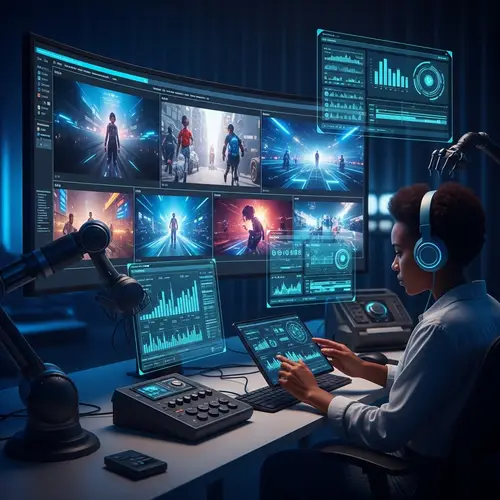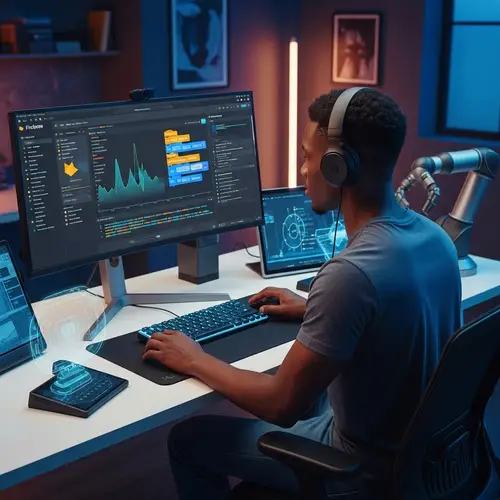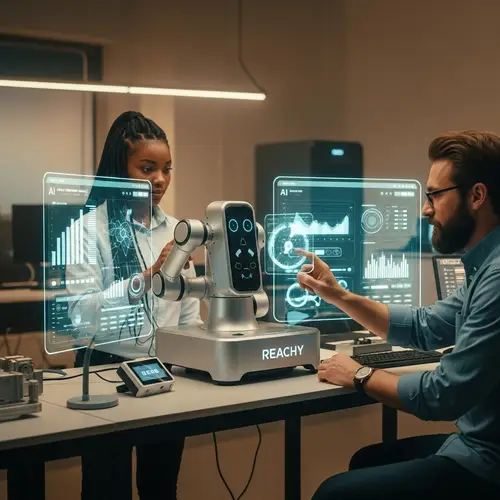AI has shaken the tech world to its core, to say the least. And right at the center of that storm, we’ve got two massive names you’ve surely heard of—OpenAI and Microsoft. But lately, their partnership—once painted as rock solid—has hit a few bumps. And not just any bumps. We’re talking disagreements involving advanced calculations, money, partnership drama, and who ultimately gets the steering wheel in this AGI race.
So, let’s talk about what’s really going on between them, what the fuss is all about, and why it matters if you care even a little about the future of artificial intelligence. Buckle up—it’s going to be a wild ride.
What Sparked the OpenAI Microsoft AGI Dispute?

The friction between OpenAI and Microsoft didn’t just pop up overnight. It’s been bubbling for a while under the surface. The way I see it, the relationship got complicated as both companies started pulling in different directions—kinda like two people trying to paddle the same canoe in opposite ways.
Initially, everything seemed peachy. Microsoft poured billions into OpenAI, becoming its primary investor and getting access to its tech for use in Azure and tools like Copilot. But here’s the thing—power struggles don’t play well in the AI scene, especially when the stakes are as high as building Artificial General Intelligence (AGI).
AGI, just so we’re clear, is that borderline sci-fi level of AI that can understand, learn, and act across a wide range of tasks — kinda like a human brain without the lunch breaks. Obviously, whoever builds it first could reshape the tech landscape entirely. So yeah, high stakes.
Different Goals, Different Paths
Where OpenAI wants to be cautious and deliberate, Microsoft’s been nudging for a more aggressive rollout. It’s the corporate hustle versus the careful scientist dynamic. In my opinion, that’s always a recipe for drama.
Microsoft’s been eager to push AI features into its core products (think Microsoft 365, Azure, Bing) and cash in fast. Meanwhile, OpenAI’s focused on AGI development and AI security, taking its sweet time—but maybe for good reason.
Microsoft OpenAI Cloud Exclusivity Conflict

Another huge spark in the fire? Cloud control. Yep, you heard that right. Turns out Microsoft has exclusive rights to OpenAI’s models for deployment through Azure.
Now at first glance, that sounds like a deal most startups would kill for. Guaranteed infrastructure, stable revenue stream, and one less thing to worry about. But here’s the twist—OpenAI’s success is now deeply tied to Microsoft’s cloud systems… and that’s starting to feel like a trap.
For instance, if OpenAI decides to compete independently or tweak its offerings in a way that Microsoft doesn’t like—well, too bad. The tech lives in Microsoft’s house now. That’s kind of like owning an ice cream shop, but you’re only allowed to sell cones inside one grocery store chain.
OpenAI Microsoft Profit Sharing Issues
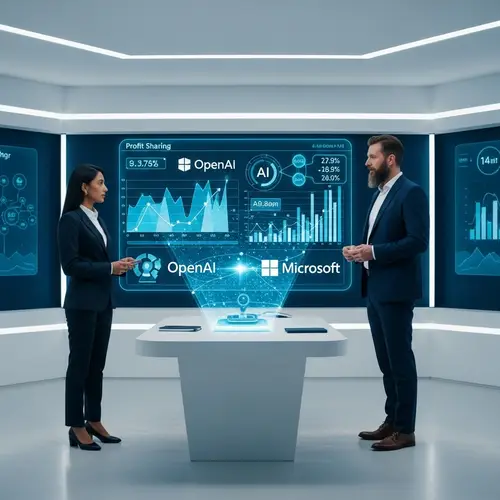
Let’s talk dollars. Profit sharing was always going to be touchy territory—especially when both sides think they should get the bigger slice of the pie. And to be fair, building Transformers, GPTs, and ChatGPT took brainpower, but turning them into commercial hits required Microsoft’s wallet and platform muscle.
So when OpenAI started getting big bucks via ChatGPT subscriptions and API calls, the “who-gets-what?” question got real complicated. Microsoft invested reportedly $13 billion—and they want what’s theirs.
But OpenAI’s split corporate structure—nonprofit co-led by a capped-profit arm—makes this revenue division anything but simple. It’s like trying to cut a cake where some slices are allowed frosting and some aren’t.
The Power Play Behind the Scenes
Now, here’s where it gets juicy. Rumors circled that Microsoft was low-key exploring ways to build its own AGI, just in case it wanted more freedom from OpenAI. I mean, who wouldn’t want to rely less on a partner when stuff starts getting awkward?
This might sound weird, but it’s kinda like dating someone while also looking up dating sites… just in case.
The AGI Race: OpenAI’s Vision VS Microsoft’s Ambition

The way I see it, both companies want to be first to AGI—just not on the same terms. OpenAI emphasizes AI security, slow scaling, and moral guardrails. Meanwhile, Microsoft’s business-first mindset doesn’t quite mesh with that strategy.
Not gonna lie—this mix of motives brings out serious friction. Imagine Microsoft’s engineers eager to slap ChatGPT into every business app while OpenAI researchers warn about accelerating AI too fast. It’s bureaucracy meets philosophy.
OpenAI Microsoft Antitrust Concerns
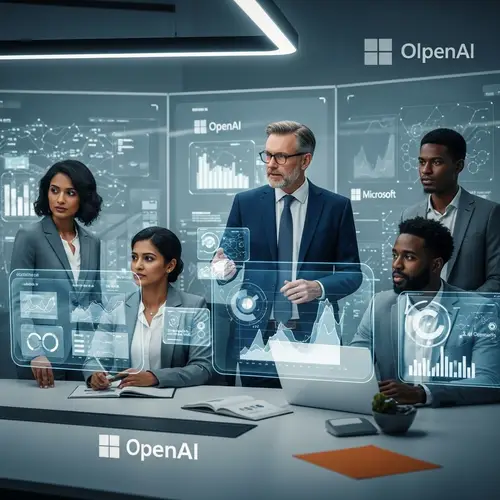
And yep, the regulators noticed all this too. With Microsoft gradually absorbing more influence in OpenAI—controlling licensing, infrastructure, and commercial strategies—it drew antitrust attention.
There’s growing chatter that Microsoft’s tight entanglement with OpenAI might breach competition rules. I could be wrong, but if this spirals further, we might see governments stepping in with investigations.
Honestly, nobody wants another tech monopoly drama—but this one’s shaping up like another chapter in that playbook.
OpenAI Microsoft Partnership Breakdown – Are We Headed There?
The phrase “partnership breakdown” might feel extreme, but I kinda get the vibe that they’re drifting apart. Not blowing up just yet, but definitely not having Sunday brunch together either.
There’ve been reports of leadership tension, disagreements over AGI strategy, and, let’s not forget, that whole Sam Altman drama where he was briefly ousted and then reinstalled… All that didn’t help trust, if you ask me.
Maybe it’s just me, but the writing’s on the wall—either they figure out a new kind of agreement or they’re headed toward something messy that could impact the whole AI landscape.
What This Means For Developers and Businesses

If you’re using AI tools in your business workflows like predictive dialing, CRM integration, customer service chats—you probably rely on platforms connected to OpenAI or Microsoft.
Potential instability between these giants could affect your tools’ availability, pricing, or even what kind of features roll out next. So yeah, with this partnership possibly fraying, keeping an eye out for changes is a pretty good idea.
Besides, developers building apps through Azure’s AI stack might want more clarity on who really governs what.
What’s Next: Rebuilding Trust or Going Separate Ways?

If things stay rocky, there are a few ways this could go. Microsoft could go all-in on building behind-the-scenes alternatives. Or maybe OpenAI tries to scale out independently again—perhaps with new investors.
There’s also the possibility that both sides come back to the table and rework their agreement—a new balance of power where Microsoft steps back just a little, and OpenAI keeps more freedom and transparency.
That said, history isn’t super kind to tech alliances when money, power, and ambition start clashing this hard.
Final Thoughts: Should You Be Concerned?

Honestly? It depends on how closely your business or projects are tied into the OpenAI-Microsoft ecosystem. If you’re using AI tools to run major operations, keep your ears open for any shakeups.
For what it’s worth, I don’t think this is the end. More like a messy midpoint. Both companies need each other, at least for now. But the balance of that need is shifting—and that’s where all the drama is coming from.
Frequently Asked Questions
The conflict revolves around AGI development priorities, who controls what, revenue sharing, and cloud platform dependence. It’s really a tug-of-war between commercial urgency and long-term AI planning.
OpenAI relies heavily on Microsoft’s Azure cloud for deploying its tools. Some see this reliance as limiting OpenAI’s ability to act independently, especially if Microsoft starts steering the ship.
Yes, there have been signs that Microsoft might develop independent AGI tech as a backup strategy. They’ve been hiring talent and stirring the pot silently in that direction.
If the partnership weakens dramatically, certain tools and features might change direction, become more expensive, or even shift to new platforms. Be ready for pivots if you’re deeply tied to Azure or OpenAI APIs.
There’s always a chance. But both sides still benefit from working together—for now. Unless the conflicts keep escalating, a total split seems unlikely in the short term.
OpenAI Microsoft AGI Dispute: Cloud Control, Profit Tensions, and a Wobbly Future
Curious how ChatGPT and other AI tools can help your business run smoother? Explore even more questions to ask ChatGPT and see what it can do for your team today. If you’ve got insights on the OpenAI Microsoft dynamic, drop a comment—let’s talk!


